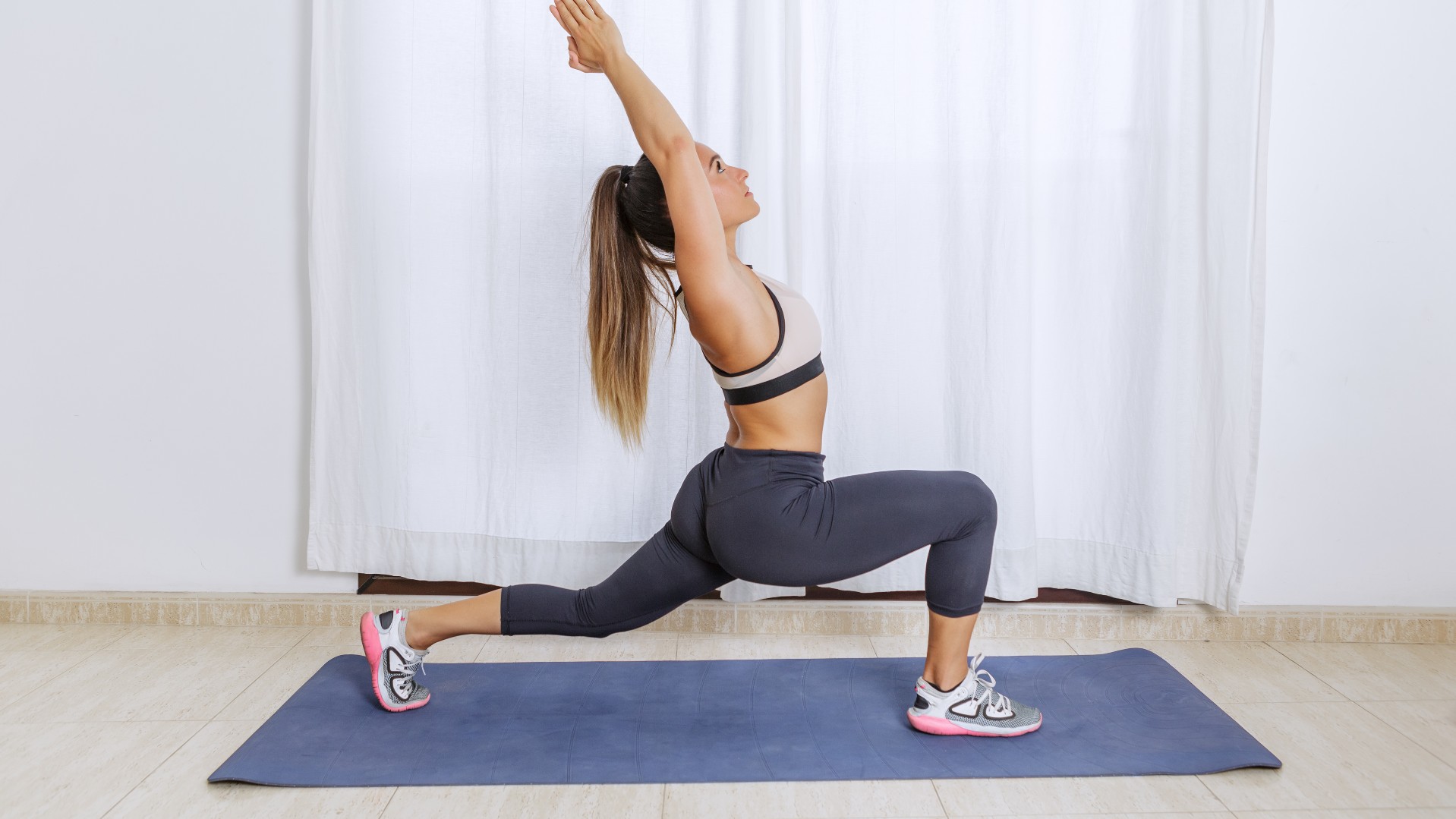
You don’t need dumbbells, kettlebells or resistance bands to build full-body strength — just this 30-minute standing Pilates workout, which is also knee-friendly.
Without equipment — although we recommend using one of the best yoga mats for support — you can Move with Nicole through a series of challenging knee-friendly Pilates exercises to strengthen muscles, improve posture and develop balance and coordination. And it only takes 30 minutes to complete, meaning you can slot this into your busy work routine with time to spare.
The bodyweight workout strengthens glutes and ab muscles, but you’ll also target your back (especially your lower back), quads, and hamstrings and activate smaller, stabilizing muscles that support major muscle groups. If you’re recovering from injury or searching for a low-impact exercise regime — add this to your repertoire.

In the name of fitness journalism, I also tested Nicole’s Pilates ab workout for abs and glutes a few months ago, and as I pumped and pulsed my way to a sore core and trembling glutes the following day, I tied down just why her workouts are so effective.
The answer is muscular endurance. This workout uses slow, controlled and precise Pilates moves by harnessing two techniques: high reps and time under tension (TUT). Your muscles work harder for longer, which means this standing Pilates workout helps maximize your muscle endurance-building capabilities (you can find 5 clever ways to build strength without lifting heavier weights here). And you don't need to ramp up your heart rate to feel the benefits, either.
Watch the Move With Nicole bodyweight Pilates ab workout
You don’t need a Reformer bed or heavy weights to fatigue your muscles, just the resistance of your body weight. A knee-friendly Pilates workout without equipment can still deliver intensity through high reps, muscular exertion and little rest.
If the thought of a workout without weights doesn’t turn you on, I recommend adding a light pair of dumbbells or some of the best resistance bands for home workouts to add extra resistance, but I guarantee you won’t need it. Nicole keeps you moving throughout, using repetitive pulsing motions to fire up muscles you didn’t know you had.
Get instant access to breaking news, the hottest reviews, great deals and helpful tips.
There are lunge variations included in the workout, but these are knee-pain friendly, although you could switch them out for squats if you prefer. As a caveat, exercises that target and strengthen the muscles around your knee joints are crucial for protecting your knees from injury and help improve balance and lower-body mobility.
Regardless, you’ll engage plenty of midsection muscles, including the rectus abdominis (six-pack muscles), obliques (the muscles running down between your ribs and hips), and transverse abdominis (deeper core muscles). Various hip abduction exercises require lifting each leg to the side, activating your hip flexors, gluteus medius (outer glutes), and quad muscles.
Nicole also includes her signature twists, holds, and crunches to fire up that familiar Pilates muscle burn and build a stronger core musculature without overloading your joints.
If your goal is weight loss, you can find out how Pilates for weight loss works, but remember that consistent exercise is crucial for fat loss, not a standalone workout.
Verdict
If you enjoy low-impact Pilates classes or want to see how one could improve your current exercise regime, this one's for you. However, Nicole doesn’t count reps like a traditional resistance program, which could split opinions.
If you’re on the fence, research has shown that Pilates has the potential to serve as a strength training program for injury rehabilitation or as strenuous exercise, making it suitable for beginners and advanced exercisers.
Remember to always cool down, even after low-impact exercise. If you’re not consistent with stretching, these 6 stretches for beginners boost flexibility in your hamstrings, calves, and ankles, and this one move to reduce hip flexor pain will open your hips and improve your range of motion during lower body workouts.
More from Tom's Guide
- The best glutes workout — 5 exercises to try
- Try this at-home Pilates workout with weights to build strength all over
- These are the best ab workouts to increase core strength
- Struggle with Sciatica? This doctor-approved exercise relieves sciatic nerve pain

Sam Hopes is a level 3 qualified trainer, a level 2 Reiki practitioner and fitness editor at Tom's Guide. She is also currently undertaking her Yoga For Athletes training course.
Sam has written for various fitness brands and websites over the years and has experience across brands at Future, such as Live Science, Fit&Well, Coach, and T3.
Having coached at fitness studios like F45 and Virgin Active and personal trained, Sam now primarily teaches outdoor bootcamps, bodyweight, calisthenics and kettlebells.
She also coaches mobility and flexibility classes several times a week and believes that true strength comes from a holistic approach to training your body.
Sam has completed two mixed doubles Hyrox competitions in London and the Netherlands and finished her first doubles attempt in 1:11.

